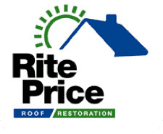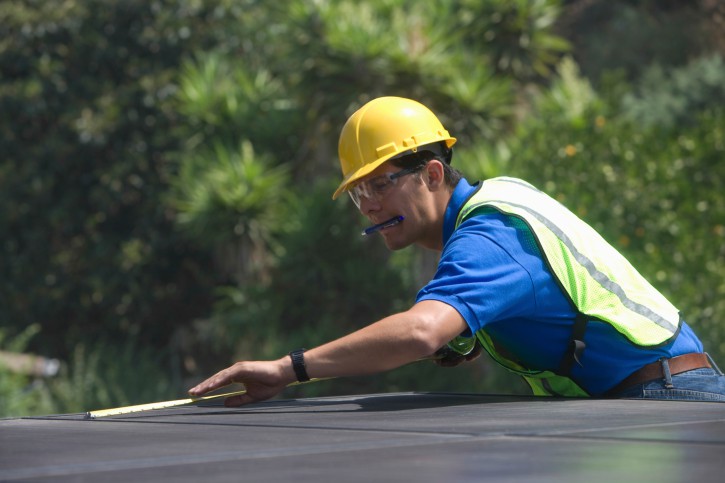If your home is your castle, then your roof is your best defense against invaders. Water, ice, mold and mildew are all enemies waiting for their opportunity to strike. Protecting the integrity of your roof is critical to protecting the investment you’ve made in your home.
Whether your roof is two years old or twenty years old, you should inspect your roof every spring, and if you live in cold climates, do second inspection check in the fall. The best preventative roof maintenance you can do to extend the useful life of your roof is to perform semi-annual inspections and identify problems when they arise.
If only it could be so easy! Maintaining your roof is a tough job, but someone has to do it. And professionals at rite price roofing for safety reasons must do this job.
Your home’s roof takes more abuse from the weather and elements than any other component of your home. Preventative maintenance saves money and gives you a longer roof service life. This guide will show you how to keep your roof in the best possible working condition.
A Word on Roof Maintenance and Safety
Binoculars are the safest way to check your roof. In most cases, you can see everything you need to right from the ground. If you can, use a window cleaning brush to reach eaves, joinery and wall cladding.
If you do have to use a ladder to inspect and clean parts of your roof, make sure the ladder is taller than the roofline by at least two feet. That way, if the ladder slides left or right, it will still remain on the roofline.
Also, if you drive a long stake or piece of rebar into the ground behind the ladder, this will prevent it from sliding backwards while you are on it. Never lean over the side of a ladder to reach other parts of the roof. Get down and move the ladder.
A few additional roof maintenance safety precautions include:
Always take safety seriously when performing roof cleaning and maintenance.
- If you decide to go onto your roof, which we don’t recommend at rite price roofing, and your roof has more than 15 degrees of pitch, use a roof ladder. It’s nearly impossible to stop yourself before you reach the edge if you slip and fall on a steeply pitched roof.
- If you can’t reach sections with a roof ladder (hipped roof or dormer windows are examples) you need to be able to affix safety ropes.
- Never climb onto a damp or wet roof! Roofs that are wet, even just a little bit, can be very slippery—especially if you have some mildew or mold on it.
- Wear soft shoes with a good grip, and always walk along nail lines. The best alternative would be for you to call rite price roofing and one of our experts will get the job done for you cost effectively.
Annual Spring Roof Check Up
Inspect your roof in the spring for debris, moss, mold, damaged tiles or shingles, and damaged or clogged gutters. By repairing it and cleaning it up after the winter season, you will extend the life of your roof.
Getting rid of or preventing Leaves and Pine Needles
- What to look for:
- If you have any buildup of leaves and pine needles deep enough to hold moisture on the roof, they will need to be removed. Debris not only traps moisture, but causes mildew to form underneath it, interrupts the flow of water off the roof, can block gutters, and can put undue weight in one area.
- How to fix:
- Use a plastic leaf rake, push broom, or air blower. Generally, power washers are too strong for most roof types and the water can make it slippery and dangerous. Even when sweeping or raking, use light pressure to avoid causing damage.
- How to prevent:
- Trim overhanging trees to allow sunlight to reach the roof. This will also reduce moisture and mildew problems, and will reduce the amount of debris that builds up.
Moss on Roof
Unless you want your roof to look like this, semi-annual roof cleaning and inspection is generally a good idea!
- What to look for:
- Moss has a shallow root system and needs a constant source of moisture to survive.
- How to fix:
- Since the roots are shallow they are usually easily removed with a long handled scrub brush or by spraying with a garden hose. Always clean and spray from the top of the roof toward the bottom to avoid damaging shingles.
- How to prevent:
- To prevent moss buildup, you might want to consider nailing zinc strips to the ridgeline. Rain that washes over the zinc creates zinc oxide, which will kill most moss it washes over. Copper strips are also effective and last longer. Install copper strips under the ridge shingles with four inches exposed to the weather.
- Zinc and copper strips can be found from most roofing suppliers.
- Finally, cut back tree limbs and remove leaves and pine needles. This will allow more sunlight to reach the roof and reduce the amount of moss you have to clean next year. Also, increasing the amount of ventilation in your attic will minimize moisture buildup and moss growth below the shingles.
Mold, Algae and Fungus
- What to look for:
- Black or discolored streaks on the roof indicate you have mold, algae or fungus. Check north facing roofs and shady sections most carefully. Over time, they can eat away at roofing material, causing deterioration and leaks.
- How to fix:
- Water alone won’t eradicate mold, algae and fungus. You need to either use a chlorine bleach solution, copper sulfate solution, or premixed professional solution designed for this purpose.
- Chlorine Bleach Solution – mix 1 part bleach to 3 parts water.
- Before you begin working, hydrate all the plants near your house by watering them thoroughly. This will keep them from drinking in any of the bleach solution.
- Apply the solution with a hand sprayer and let sit for 15 minutes. Rinse with a hose. Check to see if any mildew remains (it will feel slimy when you touch it). If you still have mildew, let the roof dry and repeat the process.
- When you are done, always rinse the chlorine bleach from the roof thoroughly—if left on the roof, it could damage some types of shingles.
- Copper Sulfate Solution – mix 12 ounces (dry measure) of copper sulfate to 1 gallon of warm water.
- Before you begin working, hydrate all the plants near your house by watering them thoroughly. This will help prevent them from drinking any of the solution.
- Apply the solution and wait for the mildew to turn brown. When it is dry, sweep the mildew off the roof with a push broom. Rinse the roof thoroughly when done.
- Finally, as we’ve mentioned before, cutting back tree limbs increases air and sun exposure and reduces the buildup of mildew and algae.
Roof Gutter Maintenance
Remember to check roof gutters and downspouts for leaks or debris that cause poor drainage.
- What to look for:
- Check that gutters are not clogged with leaves and debris and that they are draining properly. Look for cracks, open seams, or sags where the gutter has pulled away from the roof.
- How to fix:
- Wear rubber gloves; debris can hide sharp objects and it is smelly. Scoop debris into a bucket that you hang from your ladder using an s-hook.
- Bring a hammer with you to fix any loose nails you come across and tighten the gutter back to the roofline.
- After you scoop out debris, flush the gutter with a hose.
To clean the downspouts, insert the end of a hose into the downspout and turn the hose on full. Do the same from the bottom. Don’t force the hose into the bends, because it could get stuck. If there are clogs in the bends, use a plumber’s auger (snake) to work them out, or dissemble the bend to remove the clog. Call Rite Price Roofing on 08-8343 5988 and one of our specialist will look after you.


